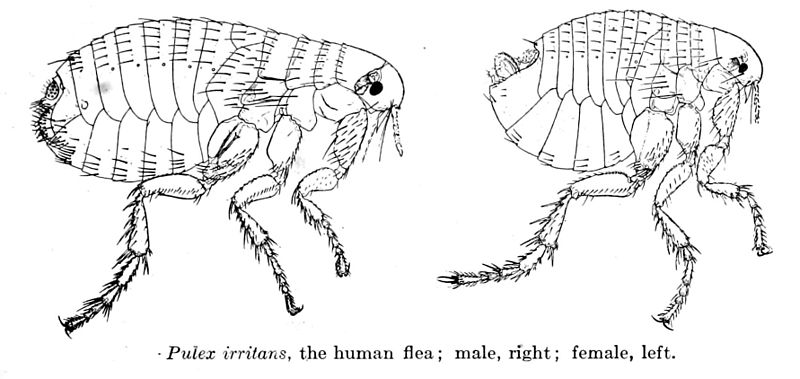Pulex irritans, or what’s commonly referred to as the human flea, is a common species of flea that’s found in nearly every region throughout the world — with the exception of the Arctic. In this post, we’re going to take a closer look at this versatile flea species, revealing why it’s such a common pest in so many different regions.
While scientists and taxonomists are unsure of the exact number of flea species currently inhabiting this world, the general consensus is that it’s several thousand. Some flea species pose little-to-no threat to pets and people, while others target them directly. The human flea, however, is one of the most evasive species on the plant, capable of thriving in a broad range of climates and environments.
Fact: The human flea is a species in the genus Pulex
The human flea is one of five different species in the genus Pulex. What makes it stand out from the rest is its ability to inhabit such a broad range of environments. The other five species in the genus Pulex are confined to the Americas (North and South America). The human flea, however, is able to thrive throughout the world, except for the Arctic.
Fact: The human flea affects more than just humans…
Although it’s name suggest otherwise, the human flea is capable of infesting many different hosts. They bite dogs, cats, birds, rats, mice, raccoons, monkeys, chickens and people. As long as the host is warm-blooded, they’ll bite it into it for a fresh meal of blood.
Fact: Fleabites on humans are typically caused by the human flea
This should come as no surprise, but fleabites on humans are typically caused by the human flea. Symptoms of human fleabites vary from person to person (depending on how their body reacts), but redness, itching, hives and rashes are the most common.
Be sure to read through some of our previous blog posts here at fleabitesonhumans.com for more tips on how to deal with these pesky blood-sucking parasites.
Fact: The human flea originated from South America
Scientists believe the human flea originated from South America. It’s unclear exactly how it was carried into the U.S., but there’s evidence suggesting it was from a guinea pig or parrot. Just a couple fleas piggybacking on a host traveling from Mexico to the U.S. may have opened up an entirely new territory for the species to thrive.

